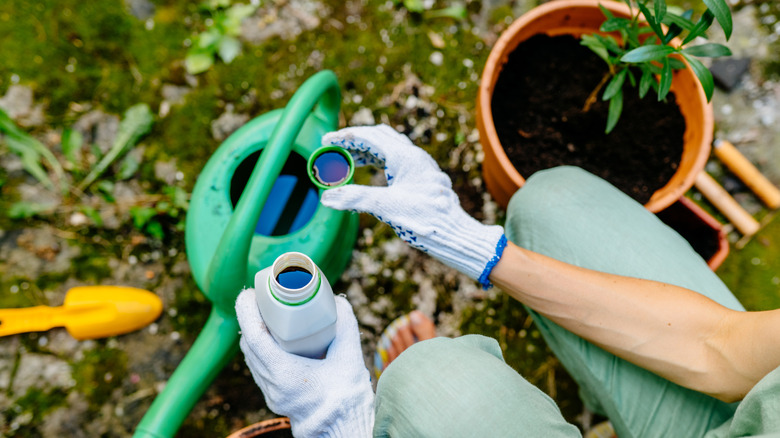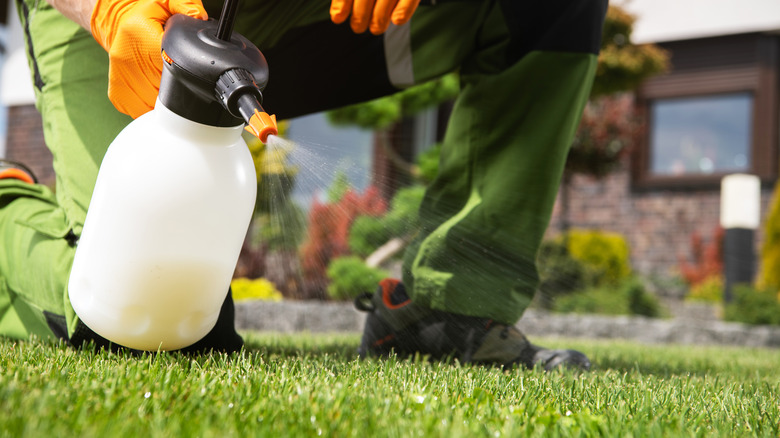When it comes to multitasking household items, hydrogen peroxide tops the list. Its utility extends beyond cleaning cuts or bleaching surfaces and emerges as a compelling ally against weeds like crabgrass. This annual weed can ruin the aesthetics and health of your lawn in no time. It doesn’t just sit quietly in a corner; it sprawls out, creating a mess with its broad, flat leaves. This isn’t merely an above-ground nuisance; the plant’s complex root system takes hold in your soil, making it a long-lasting issue that’s hard to eradicate.
Dealing with crabgrass becomes even more complicated when you consider its reproductive power. A single plant can produce as many as 150,000 seeds, setting the stage for years of ongoing infestation if not dealt with effectively. And while you might consider manually yanking them out or resorting to chemical herbicides, these approaches have limitations. Manual removal becomes a never-ending chore, and chemical herbicides can have adverse environmental impacts. This brings us back to hydrogen peroxide, your secret weapon in this battle.
When used correctly, especially with lawn aeration, hydrogen peroxide gives you a robust and eco-friendly method to attack crabgrass at the root. It also helps combat bacteria and neutralize viruses and resistant fungi. The idea is to create an environment where your desired turf thrives, and weeds like crabgrass find it difficult to take root.
The science behind hydrogen peroxide’s effectiveness

As a potent oxidizing agent, hydrogen peroxide packs quite a punch. While chemically similar to water, it’s like water’s more aggressive sibling, thanks to extra oxygen. This extra oxygen is not tightly bound, making it quick to part ways and interact with surrounding molecules. This is where hydrogen peroxide’s versatility shines — whether it’s cleaning your home, sanitizing surfaces, or combating weeds in your garden.
Interestingly, this extra oxygen doesn’t just exit stage left; it morphs into reactive oxygen species (ROS). Think of ROS as special agents licensed to kill or severely disrupt those pesky weeds. When hydrogen peroxide contacts the soil, it breaks down and releases this ROS task force. These reactive agents get right down to business. They infiltrate the weed cells, sabotaging their cell membranes, making nutrient absorption next to impossible. They can even trigger a self-destructive sequence within the weed cells known as programmed cell death.
So, when you wield hydrogen peroxide in your garden, you’re essentially employing a specialized, microscopic strike team. What elevates this method is its minimal environmental impact. Unlike many synthetic herbicides that can persist in the environment and contaminate local ecosystems, hydrogen peroxide easily breaks down into water and oxygen. This makes it an excellent weed-killer substitute since it’s safer for the soil and local fauna.
How to use hydrogen peroxide for crabgrass control

Timing and methodology are crucial to taking full advantage of hydrogen peroxide’s weed-killing properties. The most effective approach is to apply hydrogen peroxide during lawn aeration. This process consists of adding small holes in the soil to ensure the free flow and penetration of water, air, and essential nutrients into the roots. Aeration also loosens compacted soil and improves its structure, allowing for better penetration of added substances.
The aeration process makes grass healthier and provides the perfect opportunity to introduce hydrogen peroxide into the soil, ensuring better penetration and efficacy. Simply put, you’re enhancing the effectiveness of this treatment. During the application, prepare a mixture of hydrogen peroxide diluted to 3 percent, using 1 pint for every 100 square feet of your lawn. Make sure to use a garden sprayer for even distribution. The goal is to saturate the soil without overwatering, as you want the hydrogen peroxide to reach the root zone where crabgrass proliferates.
Before you start, wear appropriate protective gear, including gloves and eye protection. Hydrogen peroxide can irritate the skin and eyes, so exercise caution during application. Aim the garden sprayer close to the ground to minimize drift and target the areas where crabgrass is most prevalent. Once you’ve applied the hydrogen peroxide, allow some time for it to take effect. The crabgrass should begin to wilt and die off within a few days.


